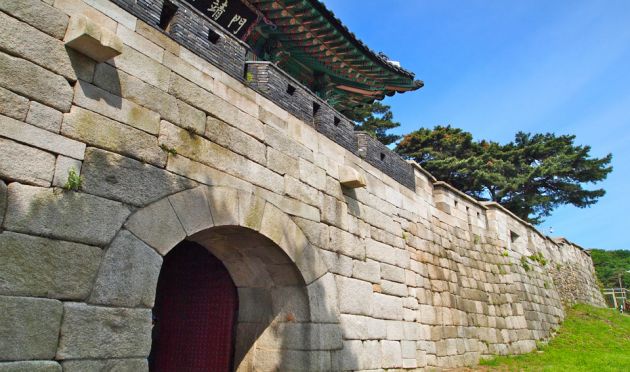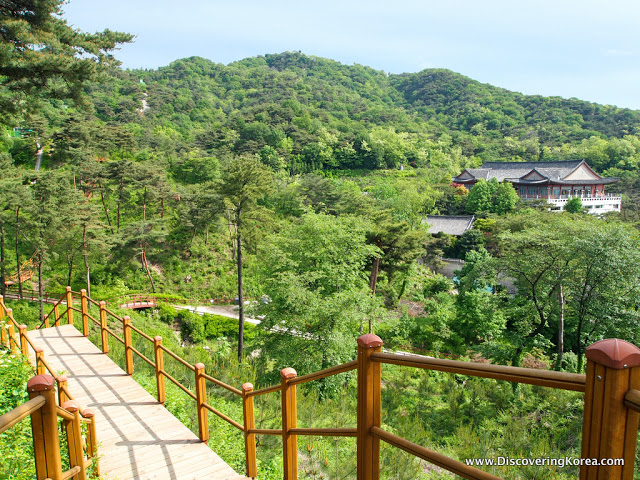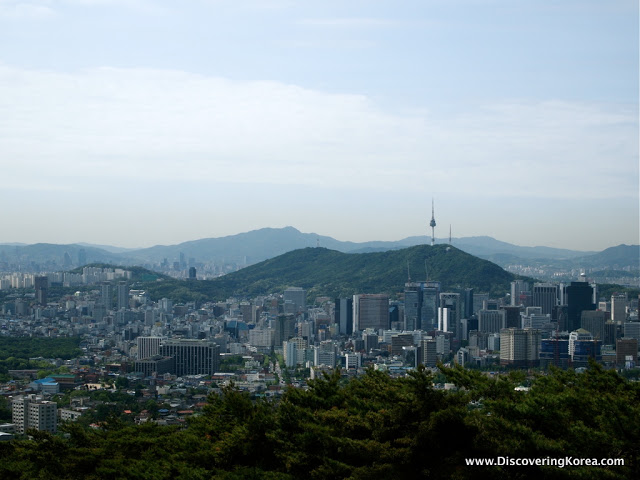Hiking Seoul Fortress (서울성곽) is one of the best ways to experience a conspicuous remnant of Seoul’s ancient past.

First constructed in 1396 – just five years after King Taejo founded the Joseon Dynasty – the earthen wall was built to join the ridge lines of the four small mountains that surrounded Seoul proper – Namsan (남산) in the south, Inwangsan (인왕산) to the west, Naksan (낙산) to the east, and Bugaksan (북악산) in the North.
Although much of the old Seoul Fortress wall has been torn down, significant portions remain and others are being rebuilt.

As you’re hiking Seoul Fortress, you can tell from the size and shape of the stones which era in which it was built. The original walls, built in the late 14th century were constructed of medium-sized round stones held together by mud.
The next major expansion, which took place during King Sejong the Great’s reign in the mid 15th century, are marked by rectangular stones closely fit together.
Another major restoration in 1704 was when King Sukjong rebuilt sections of the wall using large, uniform stone slabs joined so tightly that even a sheet of paper can’t fit in-between.

Among what’s left of the Seoul Fortress wall, the stretch from Bugaksan to Inwangsan mountains provide some of the best preserved stretches that, along with spectacular views, make for a great day hike.
Recently reopened to the public, the trail begins at Waryong Park (와룡공원). Turning left after a short break in the wall, the trail leads past a virtual tunnel of blooming vines.
A boardwalk extends throughout the forest, whose canopy provides welcome relief from the summer sun. After several hundred meters, the forest gives way to open sky, and the upscale neighborhood of Seongbuk-dong (성북동) comes into view.

Once you reach the Sukjeongmun gate Rest Area, it’s mandatory that visitors register with the office. It takes just a couple of minutes to furnish your passport, provide your contact information, receive a badge, and then your on your way to see the Great Northern Gate, Sukjeongmun (숙정문).
Among the four main gates that mark each of the cardinal points, Sukjeongmun is the smallest. Primarily constructed to comply with geomantic principles, it’s mountain-top location meant it didn’t see much traffic.
Nevertheless, from its perch on the slopes of Bugaksan, a great view of northern Seoul can be had.
While hiking Seoul Fortress, every 200 meters or so you’re bound to see a young man patrolling the area.
Friendly but hardly chatty, their presence reminds you that this area just north of the presidential house and less than two hours from the border with North Korea, remains a highly sensitive area as it was centuries ago.

With that in mind, photos are, for the most part, restricted, but the views from on high are definitely worth the trek, even if you can’t keep a memento.
After reaching Bugaksan’s 342 meter peak, it’s time to wind your way back down. As the trail becomes increasingly steep, you’ll thank me for taking you on the westward route.
After the precipitous descent, the stately secondary gate of Changuimun (창의문) signals your arrival in the peaceful hamlet of Buam-dong (부암동), and just in time for lunch!
For Your Information…
| Open: | Most sections are open 24 hours. However, the section between Waryong Park and Changuimun’s hours vary. Closed Mondays. |
| Admission Price: | Free |
| Address: | Jongno-gu Jongno 6(yuk)-ga 69 |
| Directions: | The Mt. Bugaksan section of the Seoul Fortress can be accessed via Anguk Station on Seoul Metro Line 3 (exit #2). Immediately outside the exit is a bus stop. Take bus #02 to the Sungkyunkwan University rear gate. |
| Phone: | 02-1220 |
| Website: | Official Site |
About Matt Kelley
Matt Kelly is native of the US Pacific Northwest and is half-Korean by ethnicity. He lived in Korea for five years and has written hundreds of travel guides for Wallpaper, TimeOut, the Boston Globe and Seoul Magazine and was a host for several different variety shows on Korean radio and television.
